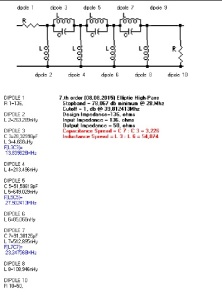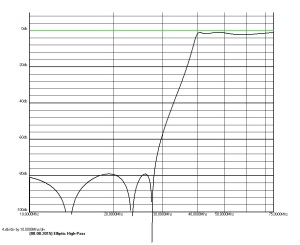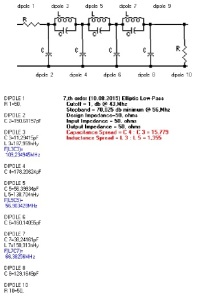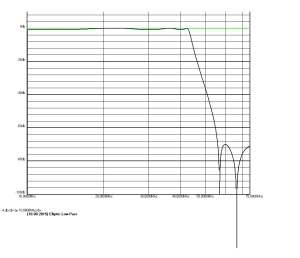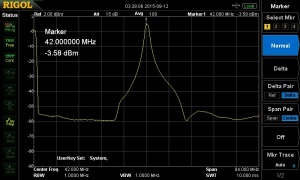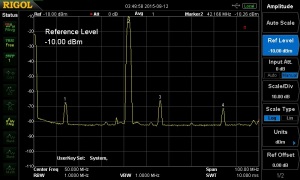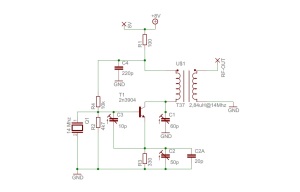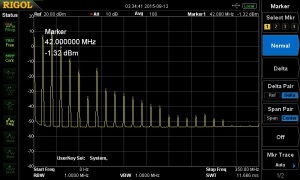Because of all the harmonic some filtering is required.
I decided to use a combination of high-pass and low-pass filter. The most important about the filters is to get the harmonics down with at least -60dB or better than the local oscillator frequency. The reason for this LP/HP combination is that the filters is simpler to trim and the band-pass is simpler to adjust, the drawback is some higher losses.But since I will use a buffer amp after the filters a loss of a few dB is not the big concern. The filters where designed with AADE filter software.
Schematics and plot for high pass filter.
Schematics and plot for low pass filter.
The EHP 40mhz must be renamed from .key to .sch to be able to open it in AADE filter software.
Trace.
Trace of filter smoothed with 100 samples.
Trace of filter and oscillator smoothed with 100 samples.
As you can see there is a bit of loss in the filters, but I’ll make a tuned input buffer amp to get rid of the harmonics on 14 MHz, 56 MHz and 84 MHz.
